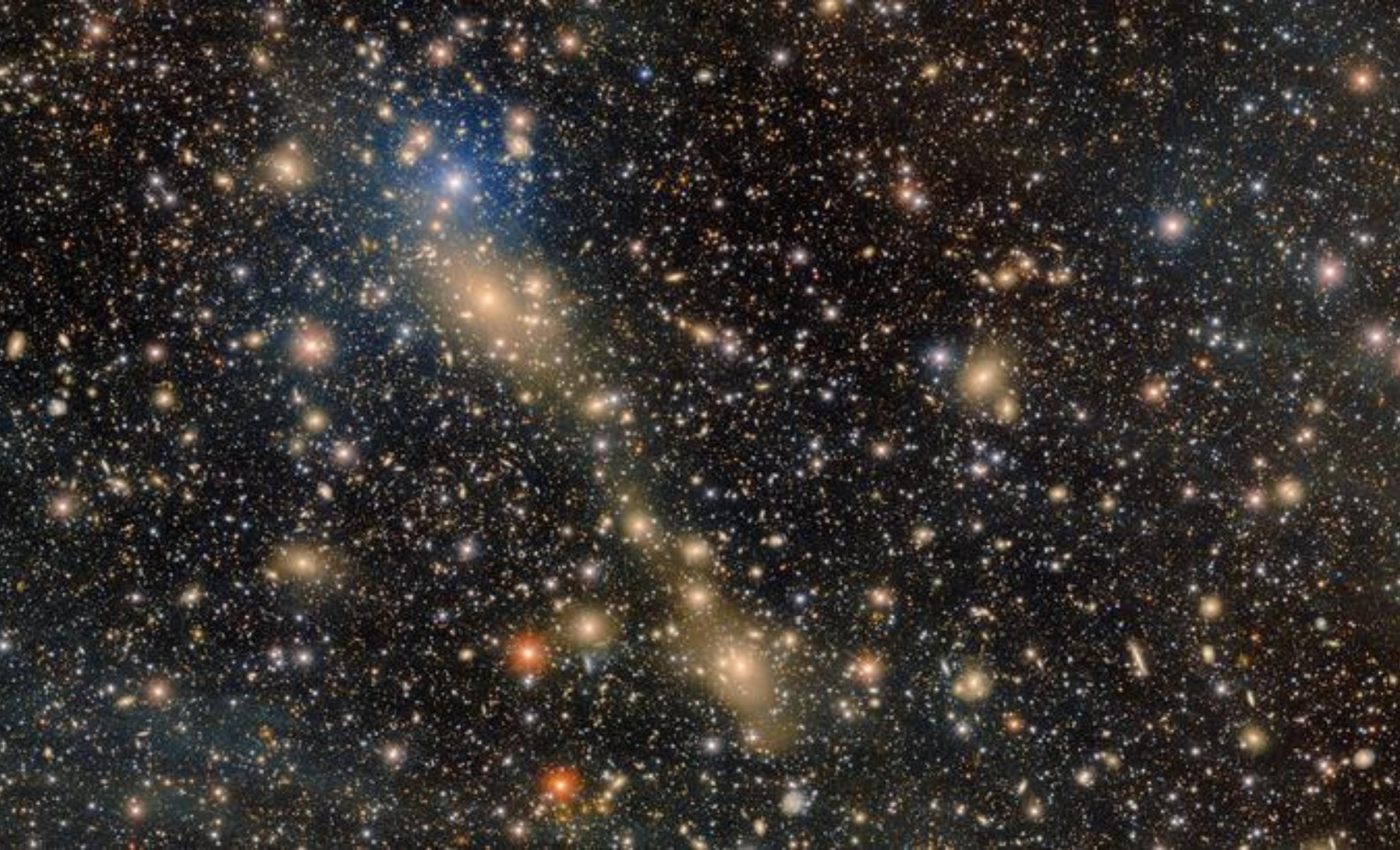
Faint glow reveals galaxies merging in deep space
A faint bridge of starlight, stretching nearly a million light years, has emerged between two galaxies in the Abell 3667 cluster. Located 700 million light years from Earth, this remarkable feature shows stars in the act of being stripped from one galaxy and pulled into another. It offers direct optical evidence of a major galactic merger.
“This is the first time a feature of this scale and size has been found in a local galaxy cluster,” said Anthony Englert, a Ph.D. candidate at Brown University.
“We knew that it was possible for a bridge like this to form between two galaxies, but it hadn’t been documented anywhere before now. It was a huge surprise that we were able to image such a faint feature.”
A faint trail of stars
Englert and his team used the Dark Energy Camera (DECam) on the Víctor M. Blanco Telescope in Chile. By combining 28 hours of observations, they captured an ultra-faint trail of stars.
The resulting image, stitched together from years of archived data, reveals an intergalactic bridge of light.
“Because Blanco has been imaging with DECam for the past decade, there is a ton of archival data available,” said Englert. “It was just a happy coincidence that so many people had imaged Abell 3667 over the years, and we were able to stack all of those observations together.”
The accumulation of data helped expose a process called intracluster light (ICL), where stars exist outside galaxies due to gravitational stripping.
Two galaxies merging violently
This ICL bridge shows that Abell 3667 is the product of two smaller galaxy clusters. Each has a brightest cluster galaxy (BCG), and they are now locked in a violent merger.
Normally, a single BCG grows by pulling in stars from several smaller galaxies. But here, both BCGs are fighting for dominance.
Abell 3667 is a clear example of an aggressive merger. X-ray and radio observations had already suggested such activity, but this optical evidence confirms it.
The smaller BCG is losing stars to the larger one, and their surrounding galaxies are also blending into one massive cluster.
This merger didn’t start yesterday. Data suggests that Abell 3667 began forming about a billion years ago when the two smaller clusters collided.
A glimpse of what’s to come
The discovery gives scientists a glimpse of what to expect from the Vera C. Rubin Observatory, which will soon begin a decade-long survey of the southern sky.
The observatory uses a telescope twice the size of Blanco and carries the largest camera ever built for astronomy.
“Rubin is going to be able to image ICL in much the same way as we did here, but it’s going to do it for every single local galaxy cluster in the southern sky,” Englert said. “What we did is just a small sliver of what Rubin is going to be able to do. It’s really going to blow the study of the ICL wide open.”
The project, called the Legacy Survey of Space and Time, may change how we understand cluster formation, galaxy evolution, and cosmic structure.
Light bridge confirms merging galaxies
Intracluster light isn’t just beautiful – it’s also useful. Scientists believe its distribution matches the pattern of dark matter, which makes up most of the universe’s mass but doesn’t emit light.
“ICL is quite important for cosmology,” said Ian Dell’Antonio, professor of physics at Brown. “The distribution of this light should mirror the distribution of dark matter, so it provides an indirect way to ‘see’ the dark matter.”
The light, in a way, acts like a tracer. It maps gravitational forces where direct observation fails. That’s why the discovery of this bridge in Abell 3667 is more than just a visual marvel.
Galaxies do not evolve alone
The Blanco Telescope and the upcoming Rubin Observatory are both operated by NOIRLab. This center runs America’s nighttime optical telescopes and is funded by the National Science Foundation.
The Abell 3667 research received support from several U.S. institutions. The National Science Foundation, the Department of Energy, and NASA’s Rhode Island Space Grant all helped make it happen.
As stars travel across this light bridge, they also carry stories about the formation of cosmic giants and the secrets of dark matter.
What began as scattered archival images became one of the clearest signs yet that galaxies do not evolve alone – they collide, merge, and reshape the universe.
The study is published in The Astrophysical Journal.
—–
Like what you read? Subscribe to our newsletter for engaging articles, exclusive content, and the latest updates.
Check us out on EarthSnap, a free app brought to you by Eric Ralls and Earth.com.
—–













